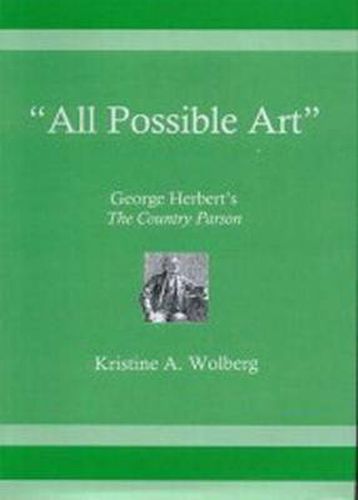Readings Newsletter
Become a Readings Member to make your shopping experience even easier.
Sign in or sign up for free!
You’re not far away from qualifying for FREE standard shipping within Australia
You’ve qualified for FREE standard shipping within Australia
The cart is loading…






Long studied for historical, biographical, or sociological purposes, George Herbert’s The Country Parson has not received the literary appreciation it deserves. Through a literary analysis exploring genre, themes, topics, emphasis, context, and models, this study finds The Country Parson to be a carefully conceived and executed piece of literary prose. Herbert wrote this work after the popular Renaissance courtesy book rather than in the more common homiletic style of contemporary clerical manuals. While his techniques for artful self-fashioning might have been borrowed from the pages of Castiglione or Della Casa, his purposes could not. Herbert believed in the mimetic effects of outer behavior in shaping the inner man. In The Country Parson Herbert used ‘all possible art’ to both describe and inspire the ‘Form and Character of a true Pastour’, that he and his fellow clergy may have a ‘Mark to aim at’. The Country Parson should be seen as a carefully crafted piece of literary prose working within, but also transforming, the popular genres of clerical manual and courtesy book, using all possible art to please and instruct both pastor and church member and ultimately (as Herbert hoped) to serve God. Literary historians, Herbert students, and cultural historians will all find this study worth their examination.
$9.00 standard shipping within Australia
FREE standard shipping within Australia for orders over $100.00
Express & International shipping calculated at checkout
Long studied for historical, biographical, or sociological purposes, George Herbert’s The Country Parson has not received the literary appreciation it deserves. Through a literary analysis exploring genre, themes, topics, emphasis, context, and models, this study finds The Country Parson to be a carefully conceived and executed piece of literary prose. Herbert wrote this work after the popular Renaissance courtesy book rather than in the more common homiletic style of contemporary clerical manuals. While his techniques for artful self-fashioning might have been borrowed from the pages of Castiglione or Della Casa, his purposes could not. Herbert believed in the mimetic effects of outer behavior in shaping the inner man. In The Country Parson Herbert used ‘all possible art’ to both describe and inspire the ‘Form and Character of a true Pastour’, that he and his fellow clergy may have a ‘Mark to aim at’. The Country Parson should be seen as a carefully crafted piece of literary prose working within, but also transforming, the popular genres of clerical manual and courtesy book, using all possible art to please and instruct both pastor and church member and ultimately (as Herbert hoped) to serve God. Literary historians, Herbert students, and cultural historians will all find this study worth their examination.